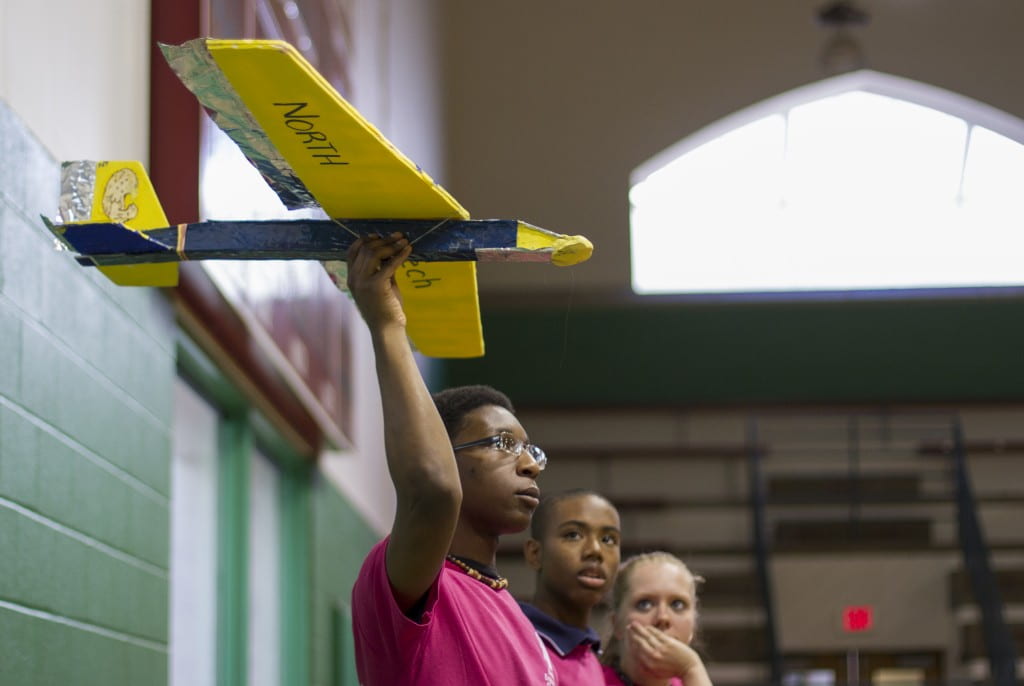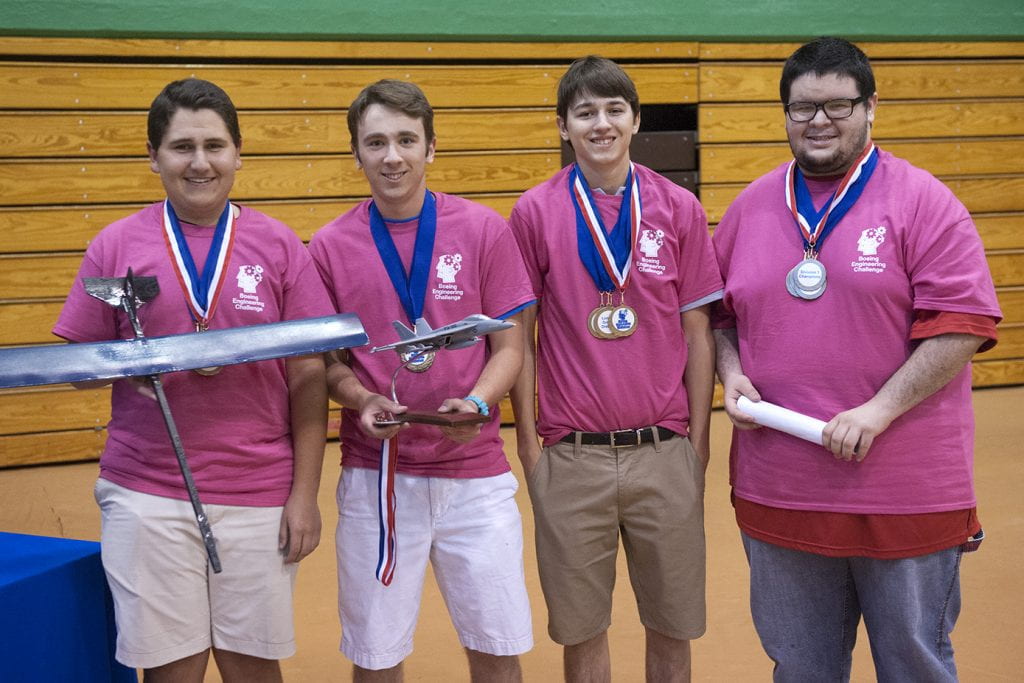
Through the ups-and-downs of perfectly timed launches and devastating crashes, first-time and veteran flyers from area schools tried their hand at going the distance.
In the Washington University Field House, 36 teams from 14 different schools across the region gathered to test their engineering might in the final flight of the Boeing Engineering Design Challenge.
The program, now in its seventh year, challenges students to design and construct a glider out of balsa wood with the help of supplies and a mentor provided by The Boeing Company. However, the challenge goes far beyond simply building a glider. Over the course of six months, the gliders undergo design and technical readiness reviews, and the students must give a presentation of their design before a panel of Boeing engineers.
This year, however, high school students weren’t the only ones up for the challenge.
For the first time in the competition’s history, middle school students were invited to participate. Boeing mentors James Thomas and Bellande Saint-Louis, a Washington University alum, were the first to recruit the students from Hazelwood Southeast Middle School.
“We attended a career fair at the middle school and met some really bright kids,” Thomas said. “So we brought the idea of having a middle school compete.”
The two mentors recruited enough students for three teams. However, Saint-Louis said that while recruitment was easy, it was retention that was the hardest part.“Once we started constructing, the students were more excited and engaged,” Saint-Louis said. “They are already excited about next year, taking notes on other planes and gathering ideas.”

Photo by Sid Hastings / WUSTL Photos
Competing alongside the middle school teams were other first-time participants. A team from Trinity Catholic High School in north St. Louis county decided to take on the competition, led by instructor Gene Schnell.
Their glider, dubbed the Flying Penguin, made the longest flight of the day, gliding the length of the field house and striking the back wall.
“It was amazing,” said Ben Sanfilippo, a Flying Penguin team member. “We didn’t think that we would do this good.”
In addition to the first-time participants, this year’s competition also featured a new challenge. In the past, planes competing in the more difficult divisions have been tasked with carrying a payload. This year, planes had to both carry a payload of ping-pong balls and drop them within a designated area.
The victors for the day included:
- Flying Penguins from Trinity Catholic won Division 1 overall
- Sugar Gliders from Marquette Catholic HS won Division 2 overall
- Leading Edge from Rockwood’s Marquette HS won Division 3 overall
- The same three teams swept other medals such as Longest Time Aloft, Highest Quality of Flight and Longest Flight
- Big Brother from Marquette Catholic won the Creative Appearance Award
In a day filled with firsts, participants each took important steps down the path to their future using the tools of teamwork, problem solving and engineering.
Carol Nelson, education relations and K-12 project manager at Boeing, said that it is important to partner with schools to make certain that students have the opportunity to pursue science, technology, engineering and math (STEM).
“It is a privilege to partner with the schools in our community and see students become inspired to pursue STEM,” Nelson said.
May 2015 | by, Gennafer Barajas